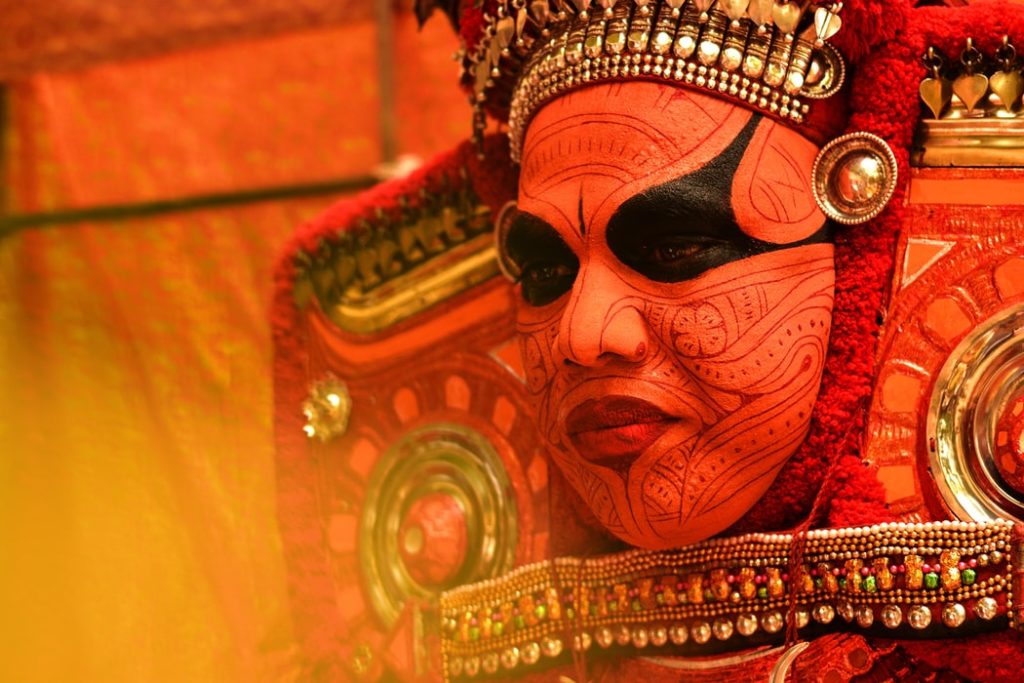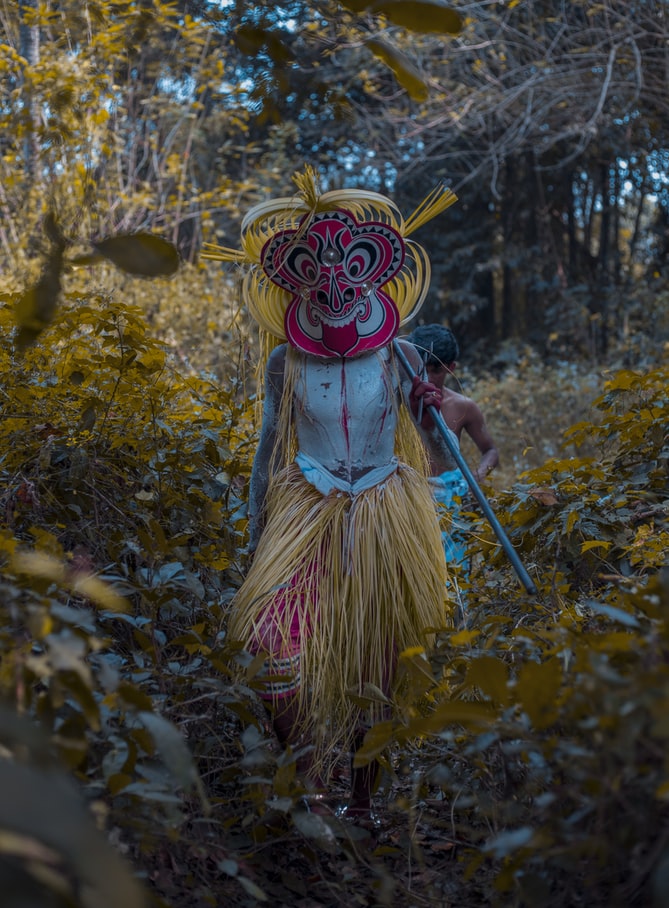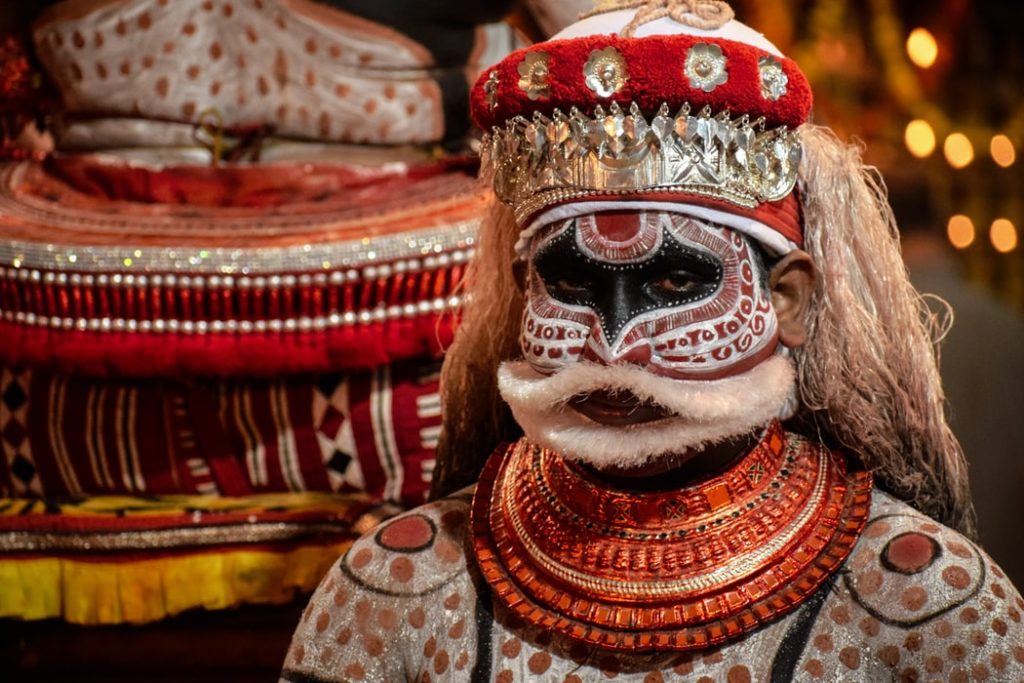
“Nangalekothyalumonnallechora
Neengalekothyalumonnalle chore
Pinnenthethevarkulampishakunn”
The above-mentioned lines are from Thottem Paatu; a ritual song that accompanies the performance of the art form Theyyam practised in northern Kerala. This art form is where the “untouchables” become Gods. These lines can loosely be translated as “the blood we bleed and the blood you bleed are the same, then why are you asking which caste I am from?” a question asked to the oppressive by the oppressed. The very essence of Theyyam, an archaic, Dravidian art form is of equality, rage against injustice, and a vision where every element in nature peacefully coexists. In the 21st century that we live in, caste divisions are still a reality and nature has never been this complicated, especially in ecologically sensitive areas like Kerala, which has witnessed two consecutive floods in the past two years.
Theyyam is a war cry against injustice towards humans as well as nature. The origin of the word Theyyam is from two Malayalam words– daivam and attam which mean ‘God’ and ‘Dance’ respectively; thus making it the ‘dance of the divine’. The interesting fact here is that it is the downtrodden class which has the right to be ‘gods’ unlike in the Vedic practices, where only the sacred thread determines your proximity to god. This is exactly what makes Theyyam central to Kerala’s socio-cultural fabric – its treatment of caste. The performers are from lower castes and communities such as the Malayan, Velan, Vannan and Peruvannan. It is believed that while performing, the artist becomes the representative of the divine. The performers lead normal lives during the off-seasonal period, as farmers or wage labourers.

For professor and scholar Rajesh Komath, what forms the core of Theyyam is, “There is no middleman here. There are no Vedic rituals. A man becomes God. You can see god, touch god, talk to god and tell him your problems”. Theyyam is essentially a ceremonious dance accompanied by the chorus of musical instruments such as Chenda, Elathalam, Kurumkuzal and Veekkuchenda. Performers wear heavy make-up and adorn flamboyant costumes. Each Theyyam performance has an aura of divine splendour as it is accompanied by rituals and other devotional music. The audience is transported to a mystic world while the God performs at night in shrines; sacred groves called kaavu or at ancestral homes called tharavadu in villages. To millions in Kerala, Theyyam is their visible and tangible Gods and Goddesses. There are over 400 separate Theyyams, each with their music, style and choreography. The most prominent among these are Raktha Chamundi, Kari Chamundi, Muchilottu Bhagavathi, Wayanadu Kulaven, Gulikan and Pottan.
Each artist represents a hero with great power. The tales woven into the history of this folk ritual range from that of yakshis (spirits), witches and myths of serpent and animal deities to the deeds of local heroes and ancestors. Theyyam is often a form of historical documentation of society. It is also linked with fertility rites and many of its myths are intimately related to curing illnesses and agricultural productivity. Some of the more popular deities are Mutthappan, Pottan, Vishnumoorthy, Pulikandan, Theyya Chamundi, Chembilot Bhagawathy, Muchilottu Bhagawathy, Gulikan, and Bhadrakali, among others.
Most of the Theyyams are Shaivite in nature. Vaishnava gods and mother goddesses are also worshipped. Other than these- spirits, ghosts, snakes, birds and other animal characters from epics and legends, martyred heroes and ancestors find their place in the huge world of Theyyam. It encompasses dance, mime, and music and exalts the beliefs of the ancient tribes who gave a lot of importance to the worship of heroes and the spirits of their ancestors.

Theyyam is the remnant of a bygone era when hierarchies were completely alien; where people, animals and birds equally coexisted. The invasion of the Vedic culture brought along boundaries and with itself the owners of lands. Kingship and feudal systems separated land and created divisions among people. The socio-cultural fabric of the region witnessed massive changes. But somehow “these radical gods survived the holocaust of Aryans”, who, free from the Brahmanical walls could eat non-vegetarian food and drink liquor. They went to mosques just like they went to temples. Every Theyyam draws into its fold pantheistic practices, along with the strong affirmations that helped the marginalized classes claim a space for themselves. “The Theyyam performer bridges the divine with the human, the land with the people, and the arcane with the current.”
Theyyam is a reminder of a society where humans, gods and nature were not separate from each other. It is a hope that such a society is possible if we try enough to get rid of the segregations and divisions that exist today. These ‘untouchable’ gods found ways to an equal society way before Karl Marx and taught the importance of Western Ghats without the need to look at any Madhav Gadgill report.
Writer: Vinaya K

